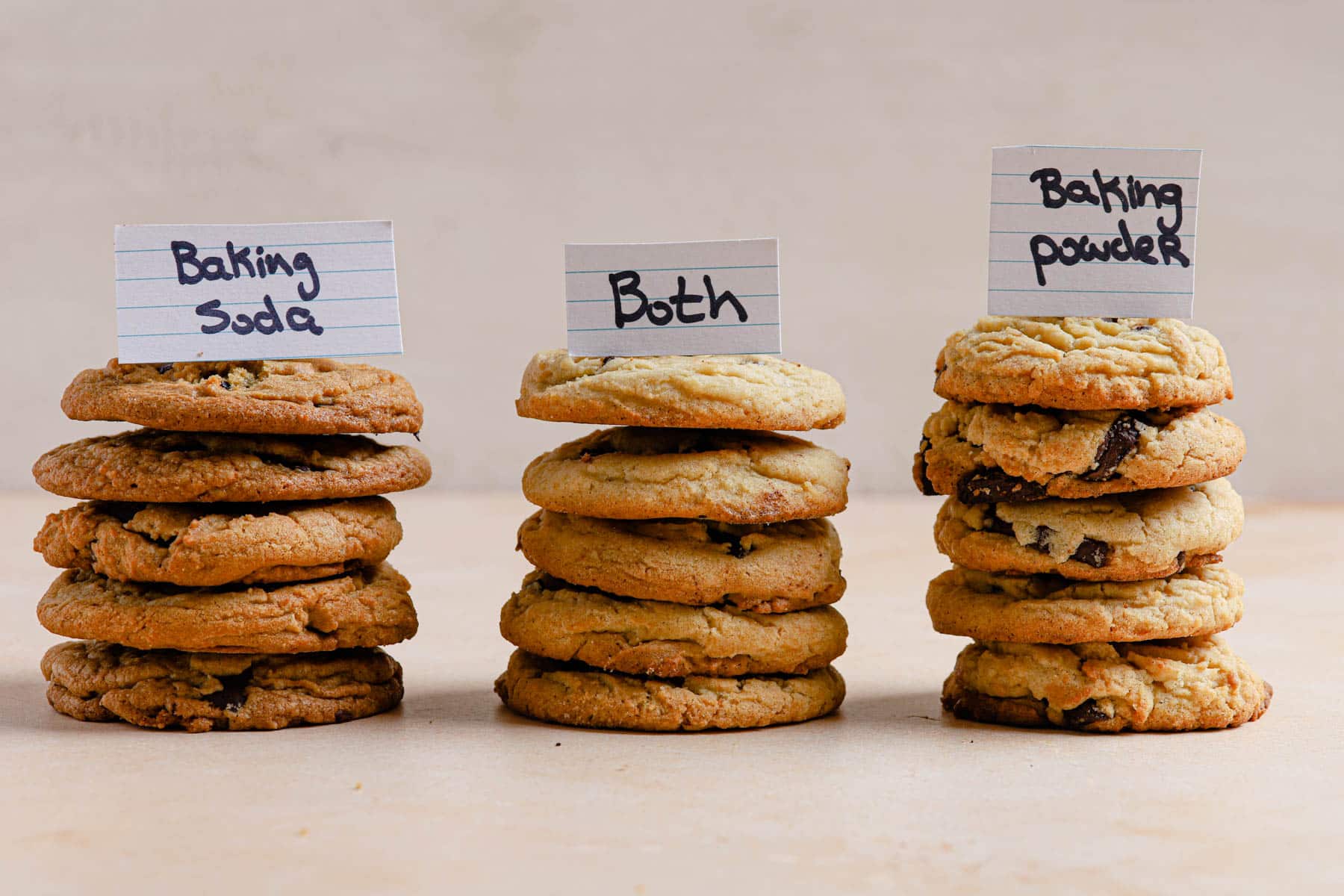No matter where you are on your baking journey, at some point you’ve probably asked yourself, “what’s the difference between baking soda and baking powder?” It’s a reasonable question: They’re both plain white powders and their names certainly sound similar. We’d be lying if we said we hadn’t wondered the same thing once or twice in the past before tying on our aprons.
It’s totally fair to be confused because baking powder and baking soda actually do have a lot in common: They’re both chemical leaveners, which means that they add volume to baked goods by generating gas during the mixing and baking of a batter or dough. Cakes, muffins, scones, quick breads, and basically anything you’re baking that doesn’t include yeast (a biological leavener) or beaten eggs (a mechanical leavener) rely on these compounds to produce a light texture or “crumb.”
Still, while they look the same, sound the same, and do virtually the same job, they aren’t substitutes for each another—at least, not entirely.
When baking soda, also called sodium bicarbonate, is combined with an acid (like buttermilk or lemon juice) and a liquid, it produces the carbon dioxide that helps the dough or batter rise.

So, what’s the difference between baking soda and baking powder?
Let’s start with the science: Baking soda is the commercial name for sodium bicarbonate. When sodium bicarbonate comes into contact with an acidic liquid—think buttermilk, yogurt, sour cream, molasses, coffee, citrus juice, or vinegar—it produces carbon dioxide gas, and those bubbles produce the lift that you’re looking for. (If you’re having flashbacks to the papier-mâché volcanoes you made for the science fair, you’re on the right track.)
Definitely worth keeping in mind: This reaction starts as soon as the two ingredients are mixed together and weakens with time. A good rule of thumb is that if a recipe calls for leavening with baking soda only, you should get the batter or dough into the oven as quickly as you can before the reaction peters out. Otherwise you might end up with flat cupcakes or muffins, even if you did everything else perfectly.
Baking powder comprises sodium bicarbonate and powdered acid—often cream of tartar. When moisture is added to baking powder, the same gaseous reaction can occur without the need to introduce a separate acidic ingredient. If you’re really in a pinch, you can make a single-acting baking powder at home by mixing cream of tartar and baking soda, although we wouldn’t recommend it for every recipe. That’s because most of the baking powder you find at the grocery store is double-acting. This means that the mix includes a secondary powdered acid and cornstarch, which acts as a drying medium. With double-acting baking powder, the first reaction begins immediately when the powder dissolves in the batter, but the second reaction (driven by that secondary acid) occurs more slowly when heated.
Thanks to that delayed reaction, double-acting baking powder gives bakers a bit more flexibility. The batter or dough can sit for a little while without the baker worrying whether or not it will rise in the oven. It also allows you to bake light, airy confections in the absence of an acidic ingredient. Powder has the leavening power to puff all on its own.
One other side effect of the additional ingredients in baking powder is that the mix is less concentrated (and thus less powerful) than baking soda. In fact, 1 teaspoon of baking powder has approximately the same leavening power as just ¼ teaspoon baking soda.
HOMEMADE BAKING SODA BISCUITS | Homestead Kitchen
FAQ
Why do you put baking soda in biscuits?
What happens if you leave baking soda out of biscuits?
Which makes biscuits rise baking soda or baking powder?
What if I accidentally used baking soda instead of baking powder in biscuits?
How do you make baking soda biscuits?
Here is a quick and easy recipe for baking soda biscuits. Preheat the oven to 450ºF (230º C). Sift all dry ingredients together in a large mixing bowl. Cut in the shortening (gradually work small pieces into the mixture) with a baker’s wire cutting tool or a large serving fork until you have a “coarse meal” texture.
What are the risks and benefits of adding baking soda to coffee?
Many people add baking soda to coffee to help neutralize the harsh taste of coffee. Some natural health practitioners also promote this combination to reduce acid reflux, reduce heartburn and reduce stomach aches. When adding too much baking soda to coffee, this can result in mostly gastrointestinal side effects such as cramping, constipation, vomiting and diarrhea. In some cases this can also result in muscle spasms.
Do you need baking powder for biscuits?
Very cold butter makes these taste incredible. It also helps to make the crumb light, airy, and tender. Extra baking powder keeps our biscuits light and fluffy in the middle. Be sure to use fresh (new) baking powder for the best results. The USDA recommends keeping opened packages of baking powder at room temperature for 3 months.
How do you make a softer biscuit?
Using a 2 inch (5.1 cm) round cookie cutter, cut out biscuits. Place your biscuits on an un-greased cookie sheet. Leave room between them, as they will expand with heat. If you prefer a fluffier biscuit, allow biscuits to touch each other in the pan and they will expand upward rather than outward, create a taller, softer biscuit.
